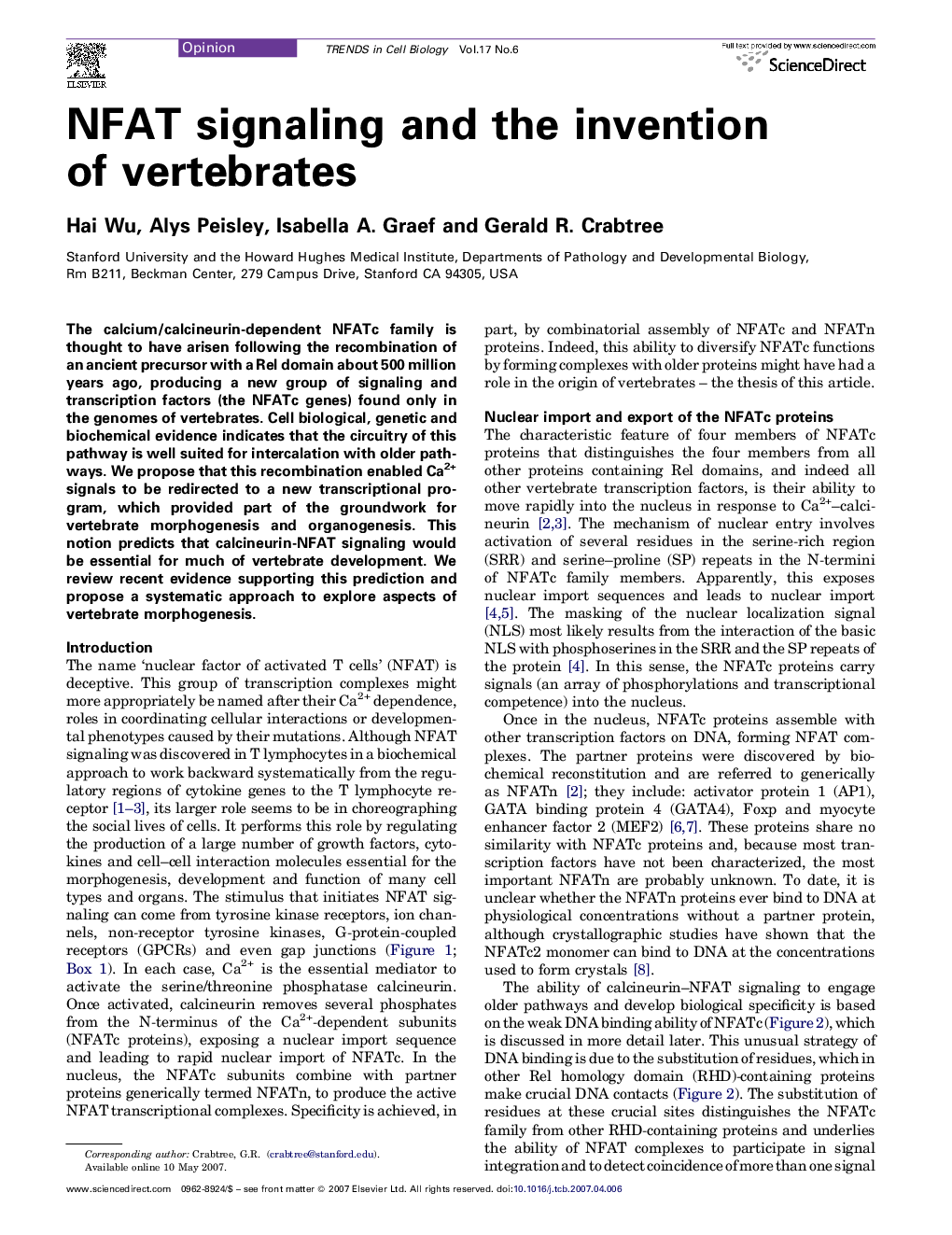| Article ID | Journal | Published Year | Pages | File Type |
|---|---|---|---|---|
| 2205029 | Trends in Cell Biology | 2007 | 10 Pages |
The calcium/calcineurin-dependent NFATc family is thought to have arisen following the recombination of an ancient precursor with a Rel domain about 500 million years ago, producing a new group of signaling and transcription factors (the NFATc genes) found only in the genomes of vertebrates. Cell biological, genetic and biochemical evidence indicates that the circuitry of this pathway is well suited for intercalation with older pathways. We propose that this recombination enabled Ca2+ signals to be redirected to a new transcriptional program, which provided part of the groundwork for vertebrate morphogenesis and organogenesis. This notion predicts that calcineurin-NFAT signaling would be essential for much of vertebrate development. We review recent evidence supporting this prediction and propose a systematic approach to explore aspects of vertebrate morphogenesis.
